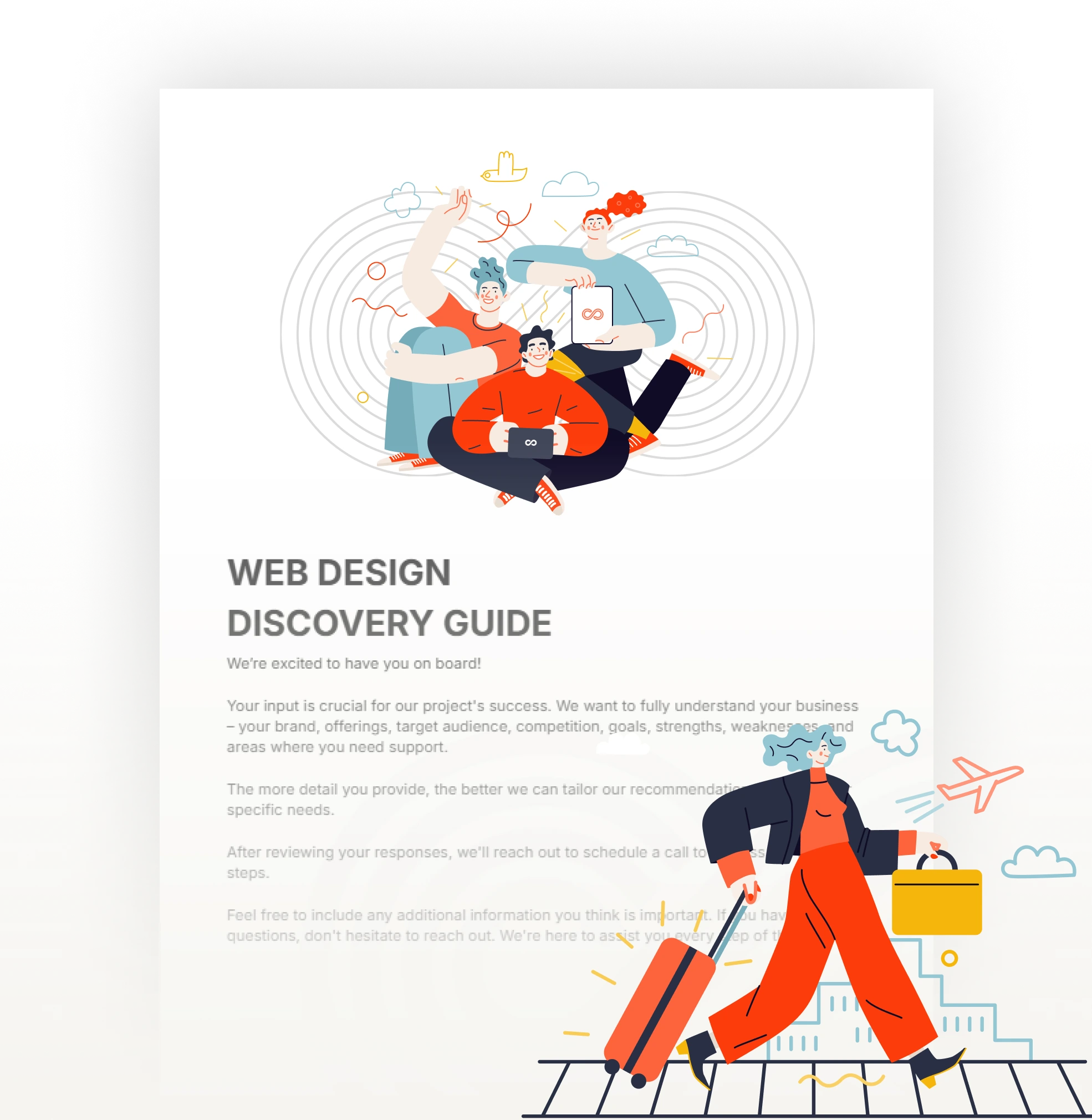Aligned Position Web Design: Crafting Visually Appealing Websites for Modern Businesses
Aligned Position Web Design: Crafting Visually Appealing Websites for Modern Businesses
Blog Article
The Very Best Kinds of Website Design to Enhance Customer Experience and Engagement
In the ever-evolving landscape of electronic interaction, the performance of Web layout significantly influences individual experience and involvement. Various layout approaches, such as minimalist, receptive, and interactive layouts, each offer one-of-a-kind advantages that can satisfy diverse customer needs. Comprehending which kinds of Web layout best serve these objectives can be essential for companies intending to boost customer fulfillment and retention. Nonetheless, the concern remains: which layout components genuinely resonate with individuals and foster purposeful engagement? The expedition of these principles reveals important understandings that may redefine your method to website design.
Minimalist Web Layout
As electronic landscapes end up being progressively messy, minimalist Web style has actually become an effective technique to improving customer experience. This style ideology prioritizes simplicity, concentrating on crucial components while removing unnecessary diversions. By making use of enough white room, uncomplicated navigating, and a limited color palette, minimal style promotes clarity and directs user focus to vital material.
The core principle of minimal website design is to develop a smooth interaction for users. By reducing cognitive lots, individuals can swiftly comprehend info without feeling bewildered. This direct approach not only improves use however also urges interaction, as site visitors are most likely to explore a website that is visually enticing and very easy to navigate.
In addition, minimalist design frequently stresses typography and imagery, making use of these aspects strategically to share messages efficiently. This concentrate on crucial elements can boost brand identification and develop an unforgettable customer experience. Essentially, minimal website design is not just a pattern; it is a thoughtful methodology that acknowledges the importance of user-centered style. By stripping away extraneous aspects, developers can create a much more interesting, effective, and enjoyable Web experience for all customers.
Receptive Web Layout
In today's diverse electronic environment, responsive Web style has actually come to be vital for developing a smooth user experience across a multitude of devices. As customers access websites on smartphones, laptop computers, desktop computers, and tablet computers, the capacity of a web site to adapt its layout and content to different display sizes and resolutions is essential.
Responsive Web style utilizes versatile grids, photos, and CSS media questions to make certain that Web content is presented optimally, no matter the device used. This approach not just improves the visual appeal of a site but also dramatically boosts functionality. Individuals are more likely to engage with a website that uses a constant experience, as it removes the aggravation of needing to focus or scroll excessively.
Additionally, online search engine, consisting of Google, focus on mobile-friendly web sites in search rankings. By taking on responsive design, organizations can boost their exposure and reach a more comprehensive audience. This approach likewise simplifies website upkeep, as a single variation of the site can accommodate all gadgets, lowering the requirement for multiple versions. In recap, responsive website design is an essential method that enhances individual experience, engagement, and general satisfaction.
Interactive Web Layout
Responsive website design lays the foundation for boosting user experience, yet interactive Web style takes this an action further by engaging individuals in a much more vibrant way - Aligned Position Web Design. By integrating components such as computer animations, clickable prototypes, and real-time feedback, interactive website design astounds users, drawing them into a richer browsing experience
This strategy not only fosters interaction however additionally urges customers to explore content actively rather than passively consuming it. Methods such as gamification, where users make benefits for completing tasks, YOURURL.com can dramatically boost the moment spent on a site and improve overall complete satisfaction. Interactive features can streamline intricate details, making it extra absorbable and satisfying.

Including interactive design aspects can additionally result in greater conversion rates, as individuals are more likely to involve with a site that actively entails them. Aligned Position Web Design. Ultimately, interactive Web layout transforms individual experiences right into remarkable journeys, making certain that visitors return time after time
Apartment Style
Characterized by its minimalistic method, flat style highlights simpleness and capability, removing unneeded elements and concentrating on vital functions. This layout ideology focuses on functionality, making certain that users can browse user interfaces effortlessly and efficiency. By using a tidy aesthetic, flat style gets rid of the clutter usually discovered in extra luxuriant designs, consequently improving individual concentrate on web content and functionality.
The hallmark of level layout depends on its use of bold colors, basic typography, and geometric shapes. These components add to a visually appealing interface that is both modern-day and friendly. Additionally, level style fosters a sense of quality, enabling users to discern necessary activities and info without interruption.
Furthermore, level style is particularly reliable in responsive website design, as its simpleness translates well throughout different gadgets and screen sizes. The lack of elaborate textures and slopes minimizes filling times, which is essential for maintaining individual engagement. As electronic landscapes remain to advance, flat style stays a pertinent option for creating easy to use websites that improve total experience. By concentrating on essential attributes, flat style not just satisfies user requirements yet additionally motivates seamless interaction, making it a vital element of reliable website design strategies.
Flexible Website Design
Adaptive website design tailors the customer experience by developing multiple repaired designs customized to various display dimensions and tools. Unlike receptive layout, which fluidly readjusts a solitary layout, adaptive design employs unique formats for particular breakpoints, making sure optimal presentation on various platforms. This method allows designers to concentrate on the one-of-a-kind characteristics of each device, enhancing usability by delivering precisely what customers require based on their context.
One of the main advantages of adaptive website design is its capability to optimize load times and performance. By offering customized material and pictures that fit the customer's gadget, internet sites can decrease information usage and improve loading speeds. This is especially beneficial for customers with slower links or restricted data plans.

Furthermore, flexible design promotes a much more consistent and go to this website controlled branding experience. Given view that designers produce numerous layouts, they can make sure that the visual elements line up with the brand name's identity throughout various systems - Aligned Position Web Design. This results in a natural customer experience, enhancing interaction and promoting customer retention
Verdict
Finally, the integration of minimalist, receptive, and interactive website design principles substantially enhances customer experience and involvement. Minimal design promotes clearness and emphasis, while receptive layout makes sure flexibility throughout numerous tools, promoting ease of access. Interactive style astounds customers through dynamic elements, encouraging exploration and personalization. Collectively, these design comes close to contribute to the development of straightforward settings that not just boost contentment however additionally drive greater conversion prices, emphasizing their essential relevance in modern Web style approaches.

Minimalist layout fosters clarity and focus, while responsive style makes sure flexibility throughout numerous devices, promoting ease of access. Collectively, these style approaches contribute to the development of easy to use environments that not only improve contentment but also drive greater conversion prices, underscoring their crucial significance in modern Web layout strategies.
Report this page